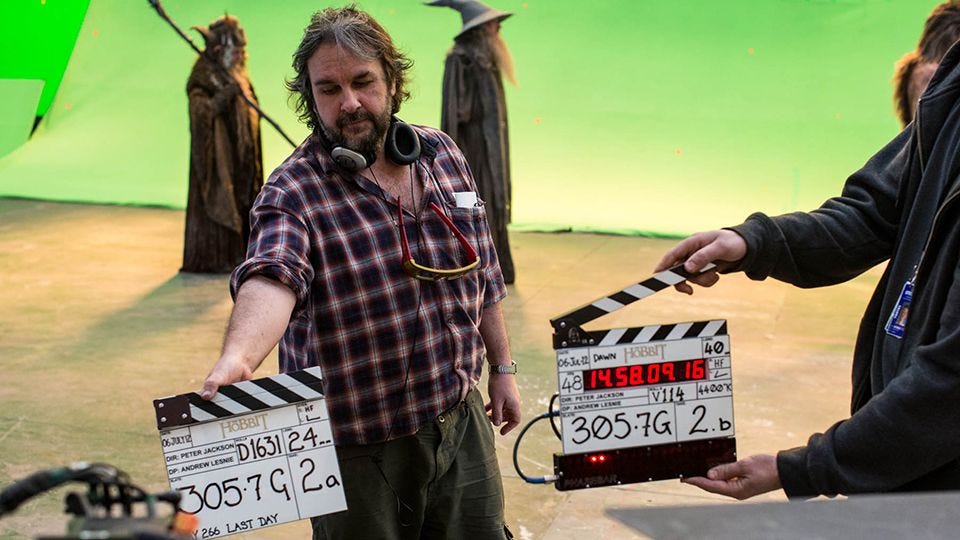You need a way to stop a scene while roleplaying
Closing out our scenes is the (kinda) final step in our process.
Making Great Scenes at your Game Table — a series
Preface: Everyday gamers don’t always know how to make great scenes
Ending out scenes with ‘Scene Breakers’ and resolving the scene.
Adding ‘Minor Scenes’ to add action and movement to our story
Anybody who’s ever tried to roleplay a Dramatic Scene will tell you that perhaps the toughest part is knowing when to end them — picking that moment to say “It’s time to stop,” and knowing what to do when that moment comes.
The best scenes are short, and often end right at the height of tension, but that’s not our instinct as gamers. This is part of how the needs of drama cut against he needs of gamers and role-players. We want to play it out, to know if we succeeded or failed, or how our actions resolve. Instead, good drama often means leaving certain questions open.
We’re putting together a step-by-step process for putting Dramatic Scenes into our tabletop roleplaying sessions. So far, we’ve picked a FOCUS character, and gave them an ACTION to do in an interesting location. Then, we brought in a PARTNER who is coming in with a MOTIVE to challenge the FOCUS character, and we’ve played out their drama a bit.
Now, it’s time to put an end to the scene.
Introducing: Scene Breakers! Six quick ways to conclude a scene.
Scene Breakers are the highly dramatic moments that bring our scene to a decisive finish. Sometimes, the MOTIVE leads us to a Scene Breaker, but a Scene Breaker can also be declared or noticed by anyone inside or outside the scene spontaneously, so long as you’ve brought the PARTNER into the scene and worked through their motive a bit.
(ie: Jamie and Lauren’s characters are fighting pretty early in the scene. Josephine, who is not in the scene, goes, “How about a Scene Breaker here? ‘Sudden Attack?’ Maybe your fighting drew the attention of an ogre, who comes crashing through the tree toward the camp.)
Here is the list of scene breakers:
Dramatic Exit
Startling Discovery
Sudden Danger
Emotional Outburst
Tension Resolved
Time to Go
Scene Breakers can be rejected by those in the scene, so long as both FOCUS and PARTNER want to continue the scene. Some breakers are easier to reject than others – an Emotional Outburst might lead to more time in the scene, but an attack by an ogre probably means it's time to stop chatting.
If both the FOCUS and PARTNER reject the breaker, move on to the rejection questions. If they don’t lead to another breaker immediately, introduce and respond to more COMPLICATIONS, and get to a breaker that one of you accepts.
Or, Breakers can be accepted, you answer the final question, and you RESOLVE the scene.
You might get to a Breaker naturally, without having to pick from the list and declare one. If so, anyone at the table can identify it by saying something like “That looks like one of the scene breakers! Do either of the participants accept?”
Because anyone can call for a Scene Breaker, at least one player between the FOCUS or the PARTNER has to accept it.
A choice about how the Scene Breaker plays out.
A way or two back into the scene if neither player wants to end it.
A firm cue to reflect on what just transpired, and to close the scene.
These are much shorter than the MOTIVE section. Here’s the one I’ve got for Emotional Outburst:
Looks great! If it looks long, consider that one of the players accepts the Emotional Outburst, it’s just two prompts that boil down to “What is the outburst, and how does it look?” and then “How do you both feel about what happened?” Simple stuff!!
Finally, let’s close out the scene. To Resolve, we ask two questions:
What are the last words or actions of each scene participant?
How did that central ACTION we started with turn out?
What’s cool here is that “last words” can be used however we want, not just as a form of action resolution. At any time, a scene can pivot. Players having a blow-out fight can decide that, using their last words, they’re going to reconcile, or make the attempt at least. Or maybe they’ll just throw out some badass one-liners! Or even sit in silence. It’s up to those players.
Here’s what it looks like:
“Annnnnnnd… CUT!”
At the end, there’s a simple, cool Aftermath section! I’ll detail this little bit in the next post, and then we’ll bring it all together and see how it looks in one full flowchart.
Notes:
I’ve got two things, and I don’t know where they go. First: At some point, we need to figure out how the PARTNER arrives in the scene. At what point do we ask this question? When they start fleshing out their MOTIVE? As soon as they declare they want to be the PARTNER? Second: At some point, we gotta ask if there are background characters, when does this get done?
I’m starting to wonder what format, tagline, title, and design I should use for the final product of this thing, since now I’m just writing the blog, filling in my MOTIVES and Breakers!, and getting ready to put it all together. I’m thinking like “Scene Kit, the Zero-Charisma Guide to Roleplaying” or something. It’s not just some marketing shit, I’m trying to figure out what my vision for this thing is, and how to get the notice of people who could benefit most from it.





